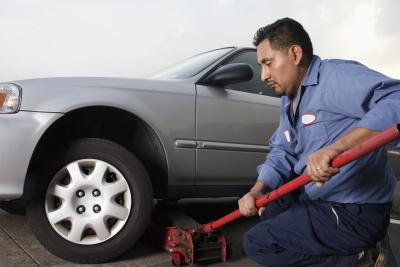
Shocks and struts are extremely crucial components of a vehicle’s suspension, ensuring that the vehicle handles safely and confidently and that the ride is comfortable over rough roads. Your shocks and struts should be inspected regularly and replaced if necessary. If your vehicle displays any and or all of specific symptoms, you need a new set of shocks and/or struts.
Test drive the vehicle over dips, bumps and rough sections of road. The suspension should not bob up and down and shake excessively over potholes. When the vehicle is driven over dips in the road, the suspension should not compress fully and suddenly and should feel well-planted without any excess looseness. During braking, the nose should not dip excessively, and during acceleration the rear should not squat or dip toward the ground to an excessive degree.
Listen for strange noise from the suspension while driving over rough roads. Though noises can be caused by a variety of factors, bad shocks and struts can rattle and bang if they are worn out and not functioning properly.
Park the vehicle on a flat, even area. Stand at each corner of the car and press down as hard as you can on the area of the car nearest where the shock or strut is located, which will be just inboard of the wheels and tires. The suspension should compress a little and then rise back up once and come to a smooth stop. It should not be easy to get excess movement from the suspension, and the suspension should not bounce up and down when you release your hands from the car.
Visually inspect the shocks. Loosen the lug nuts for the wheels, raise the vehicle with a floor jack and place it securely on jack stands. Remove the wheels and set them aside. Closely inspect the shocks and the strut housings for oil leakage. A good shock should not have any fluid leaking out of it or any type of housing that it is contained in.